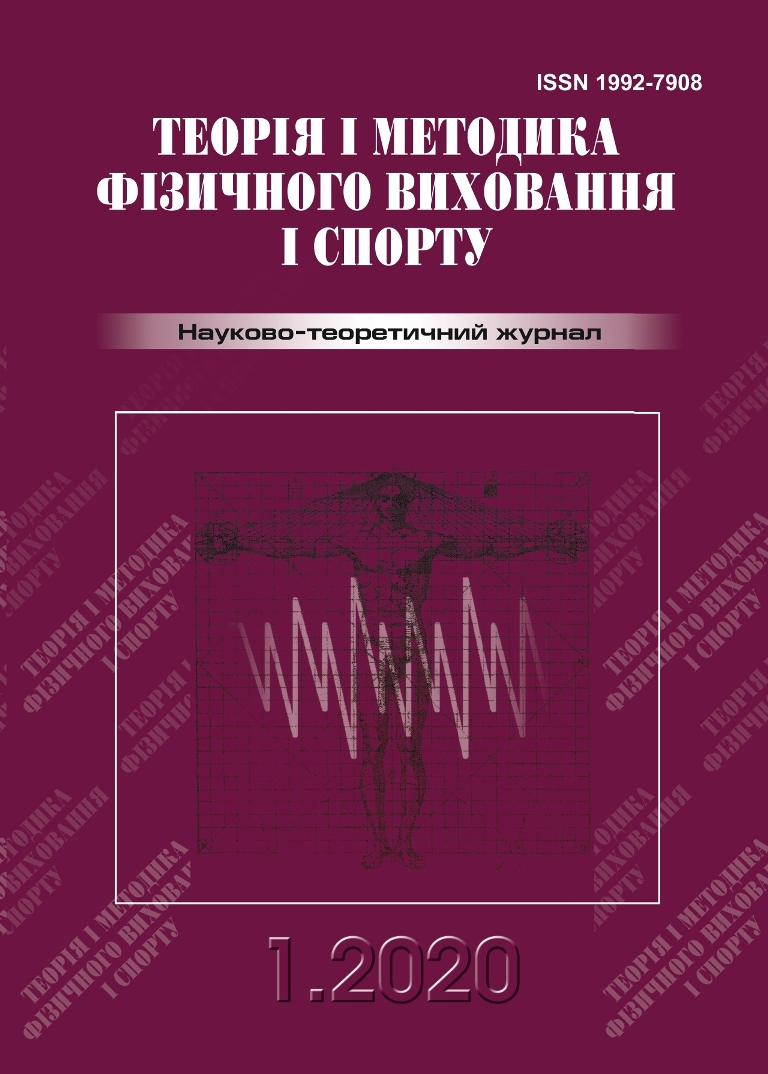ЗАХОДИ ДО ПІДВИЩЕННЯ РУХОВОЇ АКТИВНОСТІ В СКАНДИНАВСЬКИХ КРАЇНАХ
DOI:
https://doi.org/10.32652/tmfvs.2020.1.68-74Ключові слова:
рухова активність, фізичне виховання, школяріАнотація
Анотація. ВООЗ визначає фізичну активність у повсякденному житті людей як потужний засіб поліпшення здоров’я особистості і суспільства, що сприятиме соціальному, культурному та економічному розвитку всіх країн. Незважаючи на загальновідому користь і визнання рухової активності, спостерігається глобальна тенденція до зниження у всьому світі 23 % дорослих і 81 % підлітків (у віці 11–17 років), які не відповідають глобальним рекомендаціям ВООЗ з фізичної активності на користь здоров’я. Мета. Визначити особливості та напрями реалізації заходів з рухової активності в скандинавських країнах. Методи. Теоретичний аналіз і узагальнення даних літературних джерел і документальних матеріалів ВООЗ; контент-аналіз звітів і бюлетенів ВООЗ; метод системного аналізу, порівняння та зіставлення. Результати. Встановлено, що провідною соціально-детермінованою ознакою життєдіяльності у дітей є школа, де проводиться планомірна робота з популяризації рухової активності, з чітко відпрацьованими механізмами і визначними критеріями з їх реалізації. Так, у Фінляндії достатній рівень фізичної активності мають 45 % дітей 10–11 років, 19 % підлітків 14–15 років, 13 % осіб 16–17 років; у Швеції достатній рівень фізичної активності у 19 % дітей (до 11 років), 11 % підлітків (15 років); в Норвегії серед 6, 9-річних дітей і 15-річних підлітків відповідно 90, 77 і 48 %; у Данії у 16 % 11-річних дітей, 14 і 13 % дітей 13 і 15 років відповідають чинним рекомендаціям фізичної активності.Посилання
Balakirieva ОМ, Bondar ТV. Social conditioning and health indices of adolescents and young people: according to the results of a sociological study within the international project «Health and behavioral orientations of student youth». Кyiv: Poligrafichnyi tsentr «Foliant», 2019. 127 p.
Vilchkovskyi ЕS, Vilchkovska АЕ, Pasichnyk VR. System of school children physical education in different countries. Petrkov-Тrybunalskyi; 2016. 397 p.
Global guidelines for physical activity for health. Geneva: World Health Organization; 2010. Access mode:https://www.who.int/dietphysicalactivity/publications/9789241599979/ru
Promotion of physical activity in the education sector. Denmark: World Health Organization; 2018
Physical Activity Strategy for the WHO European Region, 2016–2025. Copenhagen: WHO Regional Office for Europe; 2016. Access mode; 2016. Режим доступу: http://www.euro.who.int/ru/publications/abstracts/physicalactivity-strategy-for-the-who-european-region-20162025
Physical activity and health in Europe: arguments in favor of action. Copenhagen, WHO Regional Office for Europe, 2006. 56 p.
Steps to health: a basis for promoting physical activity to promote health in the European region. Ljubljana, WHO Regional Office for Europe, 2006. 46 p.
Annerstedt C. Physical Education and Health in Sweden. International Comparison of Physical Education; 2005. 604–629.
A monitoring framework for the implementation of policies to promote health enhancing physical activity (HEPA), based on the EU Physical activity guidelines. Commission staff working document. Brussels: European Commission; 2013. Access mode: https://eur-lex.europa.eu/legal-content/EN/TXT/PDF/?uri=CELEX:52013SC0310&from=EN
Allender S, Cowburn G, Foster C. Understanding participation in sport and physical activity among children and adults: a review of qualitative studies. Health EducRes. 2006; 21 (6):826–35.
Curriculum Guidelines for the Norwegian Compulsory School. L’97. Published by the Norwegian Ministry of Education and Research. Access mode: http://www.ls.no/L97/L97_eng/
Global action plan on physical activity 2018–2030: more active people for a healthier world. Geneva: World Health Organization; 2018.
Haapala, Henna. Finnish Schools on the Move: Students’ physical activity and school-related social factors.(2017).
Hansen BH, Kolle E, Steene-Johannessen J, Dalene KE, Ekelund U, Anderssen SA. Monitoring population levels of physical activity and sedentary time in Norway across the lifespan. Scand J Med Sci Sports. 2019 Jan;29(1):105-112. doi: 10.1111/sms.13314.
Haug E, Torsheim T, Samdal O. Local school policies increase physical activity in Norwegian secondary schools. Health Promot Int. 2010;25(1):63–72. doi:10.1093/heapro/dap040
Herbert Zoglowek. Physical Education in Norway. Journal of Physical Education & Health. 2012; 1 (2), 17-25.
Janssen I, LeBlanc AG. Systematic review of the health benefits of physical activity and fitness in schoolaged children and youth. Int J Behav Nutr Phys Act. 2010; 7 (1):40.
Johansen, Danielle Louise Nørager et al. “The Golden 45 Minutes – School Reforms and Physical Activity in Denmark.” (2017): n. pag. Print.
Nordic Nutrition Recommendations 2012 Integrating nutrition and physical activity (2014). Danmark, København: Nordic Council of Ministers.
Physical activity factsheets for the 28 european union member states of the who european region. Denmark. World Health Organization; 2018. Access mode: http://www.euro.who.int/__data/assets/pdf_file/0005/382334/28fs-physical-activity-euro-rep-eng.pdf?ua=1
Promoting physical activity in schools: an important element of a health-promoting school. Geneva: World Health Organization; 2007. Access mode: http://apps.who.int/iris/bitstream/handle/10665/43733/9789241595995_eng.pdf
Tammelin, Tuija H et al. «Results From Finland’s 2016 Report Card on Physical Activity for Children and Youth». Journal of physical activity & health 13 11 Suppl 2 (2016):157-S164.
Tremblay M, Barnes J, González S, Katzmarzyk P, Onywera V, Reilly J, Tomkinson G, (2016). Global Matrix 2.0: Report card grades on the physical activity of children and youth comparing 38 countries. Journal of Physical Activity and Health 13(2), 343−366. https://doi.org/10.1123/jpah.2016-0594
Опубліковано
Номер
Розділ
Ліцензія
Авторське право (c) 2020 Теорія і методика фізичного виховання і спорту

Ця робота ліцензується відповідно до Creative Commons Attribution 4.0 International License.

